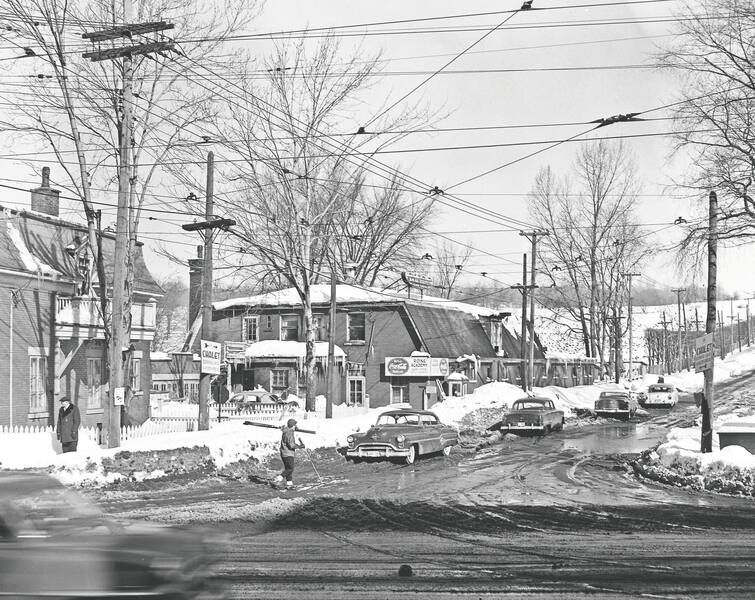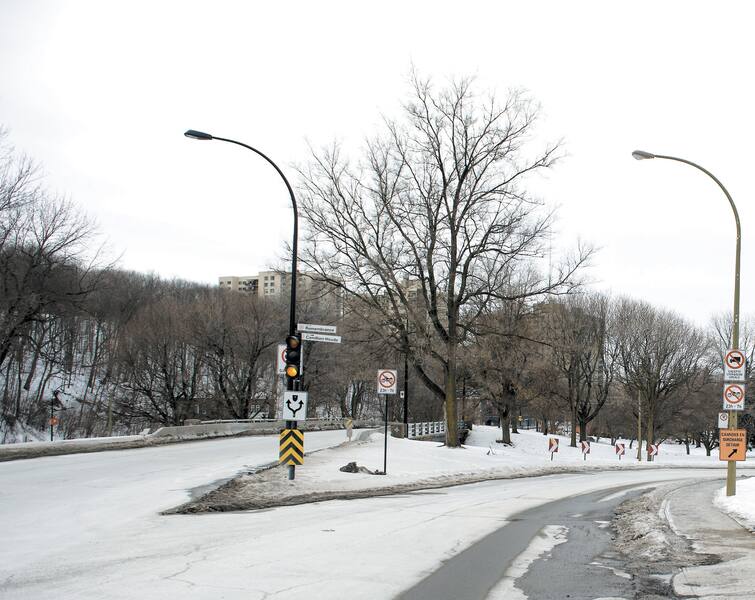On the path to Remembrance

 Photo courtesy, Archives of the City of Montreal, Intersection Remembrance – Côte-des-Neiges. 1954. VM105-Y-1_0089-004 Photo Ben Pelosse
Photo courtesy, Archives of the City of Montreal, Intersection Remembrance – Côte-des-Neiges. 1954. VM105-Y-1_0089-004 Photo Ben Pelosse
Centre d’histoire de Montréal
Saturday, February 3, 2018 19:13
UPDATE
Saturday, February 3, 2018 19:13
Look at this article
On the path to Remembrance

Photo courtesy, Archives of the City of Montreal, Intersection Remembrance – Côte-des-Neiges. 1954. VM105-Y-1_0089-004
The temperature will be announcing tonight, this skier takes advantage of this sunny day to ride on the mont Royal. Still quiet in 1954, this intersection joining the paths of Côte-des-Neiges and Remembrance is about to be completely redeveloped. Landscape architects new york, Gilmore Clarke and Michael Rapuano, offer this year several projects of modernization of the parc du Mont-Royal, a scenic drive following the route of the old tramway line. Built between 1958 and 1961, this route was named in memory of the mayor Camillien Houde, joined the Remembrance road at the roundabout to the parking lot of the Smith House, also built in this period. Three interchanges are planned on the plans of Clarke and Rapuano, including the intersection of Côte-des-Neiges and Remembrance. Giving in 1954 appearance village to the crossroads, the remains of the false mansard, and the horse riding school of J. A. Smith disappeared from the landscape to make way for the urban traffic.
Horseback riding on mount Royal

Photo courtesy, Archives of the City of Montreal, Two jumpers and a sleigh-horse-drawn on the Remembrance road, 1954. VM105-Y-1_0089-003
Despite the cold season, the students of the riding Academy J. A. Smith come out regularly on mont-Royal. Before the road improvements of the late 1950s, riders and sleds pulled by the horses attending the Remembrance road. The equestrian tradition on mount Royal dates back to the hunting parties with hounds of the Montreal Hunting Club, founded in 1826. In addition to the members of the political and economic elite, the hussars of the royal Cavalry of Montreal formed a unit within the Montreal Hunting Club. It is not surprising that their barracks is located on the chemin de la Côte-des-Neiges. The urbanisation away from the hunters of the mountain, but does not deter the enthusiasts of equestrian sport part of the Academy’s Shakespeare, and then that of Mr Smith. Today, it is the police officers of the SPVM and their robust canadian horses who have the privilege of walking the paths of mount Royal.
The dead of the mountain

Photo courtesy, Archives of the City of Montreal, Intersection Remembrance – Côte-des-Neiges. 1954. VM105-Y-1_0089-004
Lone, this man looks towards the north where stands not far from here, the entrance to the cimetière Notre-Dame-des-Neiges. It was in 1854 that Pierre Beaubien sells this land to the fabrique of Notre-Dame for the development of a new burial place to be a catholic. For reasons of safety, it replaces the old cemetery of the faubourg Saint-Antoine. Located on the present place du Canada and Dorchester square, its floor welcomes over 55,000 victims, including victims of the cholera epidemic of 1832 and the Patriots executed in 1837-38. For fifteen years, the graves are being moved, although a large number of dead bodies remain on-site. Near the cemetery of Notre-Dame-des-Neiges, the family McKenna installs its greenhouses in 1870, and flowers of the stelae for several decades. In 1888, the sculptor Joseph Brunet moved his workshop near the greenhouses where he is specializing in funeral monument. If the workshop of this prolific artist has been demolished during the construction of the heat exchanger in 1958, the works of the Brunet family are still visible in the cemetery of Notre-Dame-des-Neiges.








